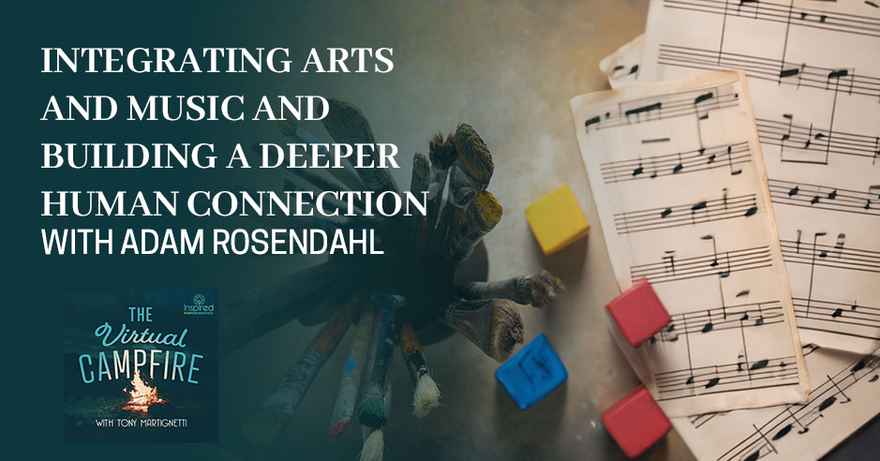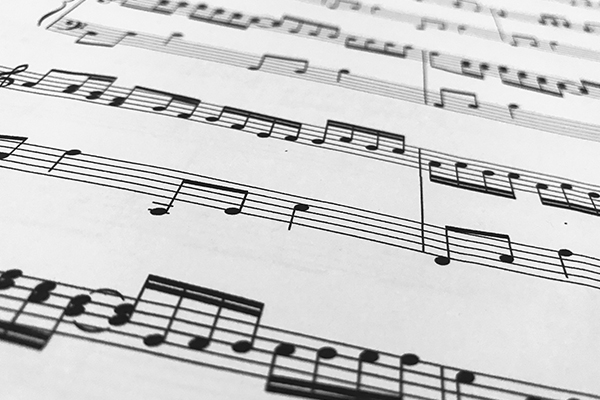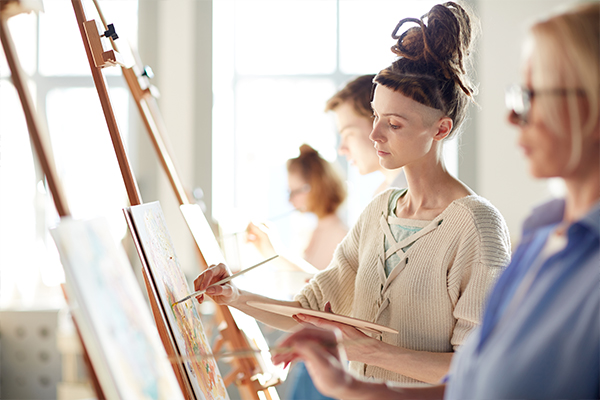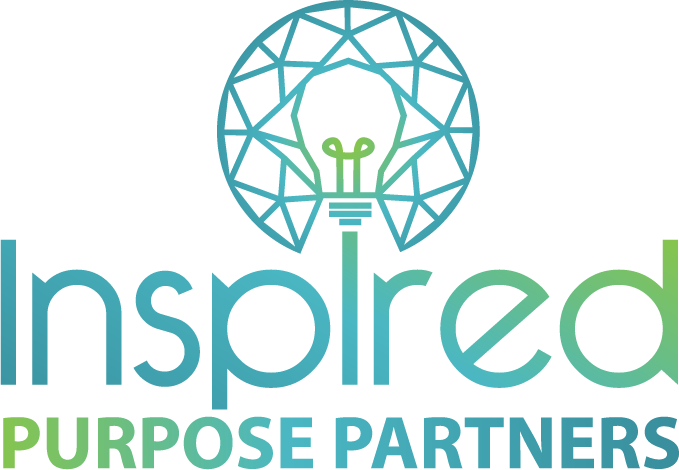Integrating Arts And Music And Building A Deeper Human Connection With Adam Rosendahl

Today’s guest believes in the power of art to transcend cultural, generational, and professional divides, get people out of their heads, and drop into their hearts. Art is the creative bridge that connects us. In this episode, Adam Rosendahl, the Founder and CEO of Late Nite Art, shares how he paved his creative path and how integrating arts and music into work affects your business. Adam also discusses how collaborative art mixed with curated music space creates a meaningful conversation and reflection with people. He takes us into the next path he heads into his career in empowering others with the power of art. Stay tuned to this episode and see how Adam paints a creative path for everyone to connect.
---
Listen to the podcast here
Integrating Arts And Music And Building A Deeper Human Connection With Adam Rosendahl
It is my honor to introduce to you my guest, Adam Rosendahl. Adam is the Founder and CEO of Late Nite Art, a team connection consultancy and learning lab that shifts perspectives through experiential learning, dialogue, music, and art. Amazing. From executives at Adobe and Pixar to federal probation officers in Louisville, Kentucky, a diverse range of companies, universities and public institutions depend on Adam to create transformational events and gatherings that help teams deepen connection, lean into creativity, and mold institutional culture.
Adam has delivered 500-plus events across 11 countries, and I'm sure that number's gone up significantly and is considered a global leader in facilitating group experiences that humanize people beyond the roles they play at work. Drawing on experience as an educator, artist, youth empowerment facilitator, DJ, entrepreneur, and community builder, Adam developed his unique methodology, which later turned into his global business, Late Nite Art. He believes in the power of art to transcend cultural, generational, and professional divides and uses art as a vehicle to help people get out of their heads and drop into their hearts, as well as to disrupt their routines. He lives in Oakland Hills, California. It is truly an honor to welcome you to the show.
Thank you so much, Tony. I’m excited to have this conversation with you.
Me too. As I introduced you and got through your bio, there are so many things about what you're doing in the world that resonate so much with my core of what I think is so important, especially now. We need to make sure we just don't treat people as employees at work, but that we create a deeper connection. We can use the things that people have in the past often overlooked, like the humanities of the arts and music, to use them as tools to unlock the most important things to us.
That's what I'm all about.
I am anxious to learn more about your journey to getting to where you're making such a big impact in the world and you're continuing to explore the edges of where you're going to go with this. To do that on the show, what we do is we explore what's called flashpoints. These are points in your journey that have ignited your gifts into the world. In a moment or two, I'm going to turn over to you and have you share the moments that have revealed who you are. You can share what you're called to share. Along the way, we'll pause and see what's showing up. We're going to have a lot of fun and I'm looking forward to hearing your points of flashpoints. Adam, please take it away.
One thing that comes to mind is I don't think my mom identifies as an artist, but she wanted to raise one. From a pretty early age, she put me in a program when I was very little that was run by psychologists in Berkeley, California, that allowed kids, and I think I was maybe 2 or 3 years old, to throw paint all over the walls and go absolutely wild with paint and art supplies.
They would not necessarily analyze us, but they would see how we engage with the art supplies and use that as a little bit of a way to read our behavior and our personality and to reflect that back to our parents. In some ways, it's fascinating because that's partly what I do now a little bit. It's cool to think about myself as a two-year-old. That's one point.
I had the gift to receive incredible facilitation mentorship at a very young age. I was part of a leadership program that was led by two people who are very much global leaders in the realm of creative facilitation. At the age of thirteen, I guess you could say I received the transmission or I was mentored and pushed into an environment that I connected on an extraordinarily deep level with my peers and teenagers, and it all happened through the arts. This was a moment in my life when I was about thirteen, where you can call it magic, but it was a certain level of connection that I experienced with other people that I don't think I had ever had that feeling before.
The way that I got to that level of depth was through the arts. Very early on, I realized that I didn't necessarily always want to be an artist in a studio, but I wanted to use the arts to help connect people. I wanted to recreate the feeling that I had when I was younger. I wanted to experience more connections like that, and I wanted to figure out how I could create those connections with others. That was an important moment on my journey as well.
Use arts to help connect people.
I want to take a moment to reflect on this for a moment because I look at that and say you were put in an environment and were coaxed, I guess, into this situation, which is great that your mother said, “This is an opportunity.” The great thing is that you took to it. It's something that seems to obviously fit into who you end up becoming, but was it also something that you wanted at the time? Some kids get forced into doing sports and activities that they don't necessarily want to do, but it seems like this is something that you want to do.
I feel like the arts had a magnetic pull. I’ve been leaning into that my whole life. Even in college, I tried to study Psychology, but I realized if I didn't actually study Art, it felt like I was fooling myself. It's part of me.
I love the fact that there's support there, too. No one was pulling at you and saying, “You got to do something different. You can't go the art path.” Were there people in your life saying that?
My dad went a more traditional path, like selling software. He's an extremely creative man. He encouraged me more on the creative path. My mom, similarly, wasn't an artist, but she was very supportive of me in following that path. My mom is a facilitator and a leadership development consultant. In many ways, I’ve also followed in some of her footsteps.
Tell me more about what happened. As you moved through your journey, what was the next big flashpoint? You got into this field of arts and what happened next?
As I mentioned, when I was thirteen years old, that started the path of being interested in facilitation and working with groups. I was part of that leadership program, and I have continued to go back to it. It was all about leadership and empowerment through the arts. It was like a training ground for me. I actually was part of it for the rest of my life, pretty much for many years after that. It's been like a pretty strong throughline.
After college, I did an AmeriCorps program where I was teaching Art in middle school and high school in Seattle. At the same time, while I was doing that, I attended a six-month course on facilitation called The Heart of Facilitation. In my classroom, I experimented using collaborative art, music, meaningful conversation, and getting students to move around the room and build off each other's ideas. It culminated into the final project of this facilitation course, which, at that time, we called creative collaboration or something. It was a very general name. That was the seed of what would become my business.

It seems like everything logically took steps. Logically, it was moving in the right direction. You have to tell me. There must have been some challenges along the way where you're like, “Is this happening,” or was there something that had you questioning the path?
It's funny when you choose the flashpoints in life, there's a lot in between. There's a lot of wandering and wondering and like, “What am I doing?” Even though I love the arts, there were a lot of people who questioned me. “Studying Art in college as a career path, what are you going to do with that? Enjoy living a life of poverty.” There's a lot of projections from other people. I didn't feel clear about what I wanted to do. I knew that I loved working with groups and I loved the arts. I experimented a lot. I had a lot of jobs in high school, college, and afterward.
None of them fully lit me up or felt completely aligned until I actually started doing what I'm doing now. Of course, lots of trials and tribulations. One example is I moved to Alabama and I was an Outward Bound instructor and I was leading twelve-day canoeing trips with court-adjudicated teenagers, mostly young men who were sent by their parole officer. They didn't choose to be there. I learned a lot about leadership, facilitation, and accessing a little bit more of my power in very dicey situations. It also lacked the creative element, even though I love being immersed in nature. Ultimately, I realized I had to have that as part of whatever I chose.
What I love about that too is there's a sense of getting on your edge. If you were doing things that were simple to you or easy for you, then it would not be as exciting. You have to have that challenge where maybe they're not always going to be a receptive audience. You want to have audiences that maybe are not going to be like, “I can't do art or I can't be creative,” and therefore, they're going to push you out of your comfort zone.

When I look back on my life, there are a lot of moments in which I chose to do the thing that felt like the most outside of my comfort zone. I decided to study abroad for a year in Hyderabad, India. I lived there. Most of that time, I was the only person from North America. I decided to put myself in a very different environment. Even in Outward Bound, being from California, moving to Alabama, and working in a pretty tough situation, I was like a fish out of water. I put myself in that situation in some ways because I wanted to learn and see what I was capable of. Also, I put myself in a totally new environment to see how I do and what new parts of me emerge.
That's so cool to hear that because when you do that, you're able to come back and be able to be even stronger and more confident in the work. Tell me how you came into the work itself. This company you started, it's still, in essence, for the broader audiences. It's not something that people would've embraced a few years ago. It seems like we've gotten to this place where maybe it's a lot more in vogue, but it's not something that most companies would be in tune with. Tell me of the journey to getting this company off the ground. I'm sure you had a lot of doubts there too.
It's interesting because companies now are struggling. A lot of people are feeling disconnected, especially with hybrid and remote. They might feel like bringing in a more creative organization is a risk, but generally, people are like, “We need help.” People are falling through the cracks, and how can we support them in this very difficult time? That is what we do. The way that we do it is unique and feels like people are taking a little bit more of a risk if I'm using art, music, and storytelling and I like doing it in a creative way. Ultimately, it's all about helping people find a deeper sense of connection and form more of real relationships in the workplace.
That desire has always been there, I guess, in a sense, like wanting to have a deeper connection but the modality is what made it interesting and fresh. The pandemic was a real wake up call. I'd love to hear your perspective on this. To hear people feeling like, “We need to do something different than what we did before.” That made it even more so like we need to get more creative. We need to get more connection.
The way I’ve been looking at it is the way that we're working is not working. This idea of “Let's keep doing what we've been doing” is clearly not working for a lot of people. There is a great need to try fresh new formats and ways, especially when people are on Zoom calls every single day and there's a certain level of fatigue. I'd say one of the most beautiful elements of using the arts in a business environment is that it pulls people out of their normal business as usual, not necessarily zombie state, but it can be a little bit of like pre-programmed, like, “We do this and then we do this and then we do that.”
When I bring lively music into the beginning of a meeting and I'm getting people to share a story and then draw an element of their partner's story and then reflect that back in front of the entire team, it brings an exciting, fresh quality to it. It wakes people up. Every single time you see people's eyes start to light up and smile and then suddenly people are much more engaged. Activating the creativity and their imagination is a great way to get people more engaged. Once they're more engaged, of course, they're much more committed to whatever the work is, the meeting, or the general theme of the gathering.
Activating creativity and imagination is a great way to get people more engaged.
What you mentioned is so great because it has me thinking about how it's no longer a thinking exercise. It's actually more of it coming from the soul or the heart. I know hopefully you can handle it. I know you can. This idea that like when you use art, it has to connect on a deeper level. The deeper level is literally going into what you feel deep down inside about what you're expressing? Whether it's listening to music, playing music or painting, there's something that gets to a deeper connection of who you are on the inside. It can't be thought through on the surface. You're right. It breaks our pattern. It has us thinking differently.
I call it a pattern interrupt. Another thing that I often say is the art is the doorway to our inner life. People often come into a meeting and they have a clear boundary of what they want to share and what they don't want to share. Personal, professional, but sometimes it can be a mask or a certain level of armor that people come with. They're different environments. Art is an incredibly powerful way to get people into a much deeper space quickly.
Art is the doorway to our inner life. It is an incredibly powerful way to get people into a much deeper space.
It's fascinating how it can pull people out of that pattern. All of a sudden, when people draw an image from someone else's story and then write some of their reflections around what was powerful from that story and reflect it back to the person who told the story, almost every single time, you see people's eyes widen.
It often creates this feeling of being seen, heard and understood in a way that's hard to do with words. That's part of the magic. It creates opportunities for people to reflect back to each other and what they're receiving. It's so rare. Most people have that feeling of being truly seen by a colleague. When that happens, it changes the relationship with that person. Oftentimes, people have a sense of, “I see you now and I get you. I understand why you are who you are.” In some ways, it gives more compassion and a little bit more flexibility around the things they're challenged by or frustrated by around that person.
It's a beautiful way to melt hierarchy. In terms of different roles between leaders and new employees and executive team and the other teams within a company, within the arts, everyone is on the same playing field. It can be a great way to drop and melt those barriers that exist more strongly in some teams than others. Often, it can be dividing.
I have so many different questions I want to ask about this because I think this work that you're doing is so cool. The first question is, if you're willing to share, what have been some maybe unusual things that have transpired in the work? Have there been maybe some people who have resisted? Maybe some senior-level people said, “This is not for me. It's for my people. Therefore, I don’t participate in these types of events.” How do you get the people who are resistant to get on board? Maybe you have some horror stories if you want to share?
The work I do, naturally, people have an aversion towards team building, team development or something where I'm going to get people to be vulnerable. Most people start off with the armor up and a sense of resistance and sometimes even non-compliance or deliberate, not wanting to actually fully engage. That's pretty normal, I'd say, especially with higher-level and executive audiences. There is a sense of, “I'm so busy. I don't have time for this. What does this have to do with my work and being a high performer?” There is a little bit of convincing that needs to happen.
Usually, in the first fifteen minutes, folks realize that it's not about me. I'm not necessarily a keynote speaker trying to force them to do something, but it's all about their connection with each other. I'm creating the space, asking the questions and creating the atmosphere for that connection to happen, for people to start to buy in and drop in. Usually, about 15 to 20 minutes into the session, the whole tone changes.
Of course, anytime there's art supplies or a creative element, you always get skeptics and people who walk in and they say, “This is not for me. I'm not creative.” A strong part of the programs that I lead is that this is not for artists. This is not an art class. I'm not teaching people to become a better illustrator or painter. The art supplies on the table or when we're doing it virtually, the creative element is like the bridge or the vehicle to help people connect with each other. It's that unique X factor that takes people out of their normal and gets them into this deeper space. It's a very effective way of doing that. Of course, there's tons of horror stories.
Generally, I find that this mix of the methodology that I created is collaborative art mixed with curated music space for meaningful conversation and reflection, all happening along a table in a very tightly guided and facilitated environment where people are responding to questions. This format, like we've mentioned, I’ve done it. We've done over 650 events now. It's across about seventeen countries.
Whether we're working with executives, doctors, government officials or people who are in deep grief or a healing process from something that happened, this process or format has been a very effective way to get people on the same level. They open up and be more real with each other around how they're feeling and what's going on for them. In terms of addressing that resistance, you were talking about what are some of the tools to address the skeptics. Music is an incredibly powerful tool that melts skepticism. When you play the right song, as much as somebody wants to be like, “I don't want to be here. I have a lot of things to do,” sometimes you play the right song and all of a sudden, they drop into the moment.

It's not like you're asking them to dance or to perform. At that point, it's creating the environment that allows them to drop in and they then maybe let their guard down a little bit. That's the starting point of it all. It speaks to a lot of the things that I think about, which is we need to create the right environment for things to happen both inside and outside of work. Oftentimes, people ask, “Why aren't these things happening already?” You're not intentional about setting the right tone. It's not about what you say. It's about the way that you're showing up.
That's it. It's not about what you say because people can feel what is the deeper intention, especially with team development. People come in with a lot of resistance, like, “What are you going to make me do?” It's the quality of being a facilitator and believing. For me, I believe in what I do and I’ve seen again and again the beautiful impact that it can have on people who are feeling disconnected. Whether they make one new friend or they feel like they have a real authentic relationship and conversation with somebody, it can open the door to a healthier life, a more satisfying work environment where people feel like they could be more themselves. That actually can change people's lives.

I'm curious. Where do you take this from here? What is on the horizon for the work you're doing? Do you see it evolving in a different fashion or do you see it as continuing with some small tweaks? Tell me more about what you see the future looking like in your world.
Late Nite Art’s been under a continual evolution since it started. The seeds were planted in 2010 and then the first event happened around 2012. At this point, we have eight facilitators who are in the UK and Germany, Massachusetts, Chicago, and three in the Bay Area. Each of us has a different specialty and I'm a big part of this time. I'm cultivating a sense of community and a community of practice with our eight facilitators. There's a powerful home base from which the work gets generated. I'd say the next step is we led our first corporate Train the Trainer Program. We had about twelve of our clients who are from very large organizations like Google, Stanford, Sephora and Logitech.
We brought them into a three-day deep dive facilitation training. That's all about helping them take the work we're doing and then bring it back into their organizations so they can have that ripple and impact with all of their teams. Watching that unfold has been one of the most incredible things I’ve ever done in my career so far, watching them take the tools and implement them. It’s been incredible to watch.
The next step is continuing that training path where we're continuing to invest in our clients, doing the work in their own companies and environments, and then watching the impact ripple out. We're continuing to do our own events, but there is another level when we create the opportunity to empower others who never thought they could use creativity in the arts in their work. We watched the spark get lit and watched them go and do these events all over the world with hundreds of people. It was exciting.
For instance, two of the people in our training are lecturers at Stanford and they are saying that the students at Stanford have been struggling. There's a lot of loneliness and you could call it a crisis. This is a very prestigious institution. What can we do about this? It's across business and education. Having professors who are incredible facilitators who can create more of a sense of connection using the arts in these untraditional and new ways is a great example of how we can actually address this bigger problem of disconnection and loneliness that's solved across the world now.
I love the choice of words. First of all, the vision you've created is beautiful. I love this idea of rippling out, rippling the impact because you realize that this type of work doesn't have to be limited to any one particular group. It's for everyone who is willing to participate. The more people who get involved, the more connections we create. It should be no surprise that the very fact that we're having this conversation, this human connection, is very important to me and it's a very important aspect of how we need to create a deeper connection. This work is all about that. It's so great that through this conversation, we can continue to amplify that. I'm grateful for the work you're doing.
Thanks, Tony. Human connection has been definitely the theme since I was little. It's partly because I'm an only child and I felt disconnected and I felt a lot of social anxiety. When I was in an environment that was a facilitated environment where I felt that sense of being seen by the people there, that was such a deep experience for me that, in some ways, it's not necessarily an addiction, but it's like something that I sought out. How can I be part of more environments where I feel fully seen?
The thread of my whole life and my work is creating those environments for people feel, seen, heard and understood. During the Train the Trainer, actually, there was one woman who said the woman across from her across the table is drawing an image from her life from the neighborhood she grew up in and then writing some of the strengths and values that she saw in this woman. After that was reflected back to her, she said, “I don't just feel seen and heard now. I feel complete.” There's something about having her life experience reflected back that it made her feel complete. I love that word.
When I think about the word human, of course, you know what the word human means, but people often ask me, “What does human connection mean to you?” It's about bringing the complete person holistically into every space they show up, whether at home or work. It's about bringing that your full self into those spaces. I'm not talking about everyone having to be shown all their vulnerabilities and everything, airing dirty laundry and all that, but it's about feeling complete. You don't have to hide things that you want to share because you're afraid of being judged. That completeness is what we're looking for.
That's the key, what you said about the worry about being judged. It is true that I feel like there's very few environments that are truly non-judgmental environments. That, in some ways, is a huge part of what we do and it's unspoken. In a lot of ways, we often do need a facilitator or a guide to create the guidelines for that. How do you create an environment where people don't feel judged and they can truly feel the freedom to encompass the different aspects of who they are, because that's certainly not the case for most people in school or work.
I have one question I'm very curious about. You've been on quite an interesting journey. We've touched the surface on a lot of things, but I want to know what you have learned about yourself on this path of getting to where you are. I know that a lot of things have been ingrained in you from an early age, which is awesome and they've stayed true to you. I want to know. What are the things you've uncovered about yourself that you want to share that might be helpful for others?
There's been a ton of learning. This new chapter of my life, the learning, is a lot about leadership, about like I keep saying, creating environments that where people can show up. I do the work as a consultant and a facilitator inside a lot of teams around the world, but now, I'm cultivating that within my own team. There's a walk the walk moment that's happening for me, building the culture of the Late Nite Art team. Now, there are about twelve of us involved in the company. I'd say there's a ton of learning of how can I hold that quality of creating space for people to be in their zone of genius and also feel connected to the community of the organization.
How can I step into that leadership role more and more and trust myself that I deserve it and that I can own it? There's constantly the like little old me, the victim and then stepping into the power and then falling off that. I'm learning more and more to trust myself and the intuition that I have around making decisions. There's a lot that I'm learning about the how art and what we do is truly needed in organizational culture and how can we weave in and fit into this moment that we're in with the rise of AI and machines. What is the need for eye contact and creativity as a way to connect people and get them out of a distracted state? I'm learning a lot. I'm learning a lot. Also, the stats and the research around the arts and around disconnection and loneliness.
I know we're going to talk about some of the books that are top of mind for you and I'm sure you'll have some books that mention a lot about that, the loneliness and what have you. You're right in the money. This sense of we need to connect with what's the future going to look like as we continue to move into a more AI future. We have to make sure we're still staying connected and keep the human element of creativity front and center so important.
I also love that you shared that and it's an interesting thing. You didn't explicitly say this, but I’ll intuit this. You're actually moving into your own space of your edge where you're growing into. As you're evolving, you're also trying to figure out where you belong and where you fit into the bigger picture. There's a growth edge that you're on.
I never thought I would be an entrepreneur. I had an aversion to traditional business and I identified more as a creative and an artist. I started moving and I was a doing a lot of youth empowerment work as an educator. I moved into being an entrepreneur and working with teams and companies. Now, I'd say I'm in that next level of stepping into leadership and owning being a CEO and what it's like to run a company, create a culture and shine a light with our why and our vision. There's been a big evolution in my own identity. Sometimes I fall back into the old self and I have to remember who I am now and that I'm so different from how I was.
I love what you got into here, but I have one last question for you. What are 1 or 2 books that have had an impact on you and why?
Almost every single day, I find myself talking about these books. One is called Your Brain on Art: How the Art Transform Us by Ivy Ross and Susan Magsamen. The other one is called Together: The Healing Power of Human Connection in a Sometimes Lonely World by Dr. Vivek Murthy, the US Surgeon General. I had the honor of getting to spend the day with Dr. Vivek Murthy and Susan and Ivy. It was amazing to meet them and to feel there is a movement that has been started. Ivy and Susan are calling it the Creativity Revolution.
It’s about how we implement the learnings from their book, which is all about how art can be used to heal our world, individually and collectively. I feel like there's a movement that is so aligned with the deepest challenge of our time, which is around disconnection, loneliness and polarization. Reading these two books helped me understand in some ways where I fit and where Late Nite Art fits in this bigger global challenge as an organization that's dedicated to addressing disconnection and doing that using the arts.
Art can be used as a tool to heal our world individually and collectively.
Those two books should be sold together because they're a nice compendium to partner up and see how one identifies a problem and the other brings a solution to the table, or at least contributes to a solution. I will say that I am so jealous because I'm trying to get Susan and Ivy on the show. If you have any connections, please tell them. I'm such a huge fan of their book. It's one of my favorite books. I love that you brought those two books into this space. Adam, I don't even know where to begin. This was so much fun. I loved all your insights and having this chance to explore this amazing work that you're up to. Thank you so much for coming on.
It's so great to connect with you, Tony. I feel like there's so much synergy between the deeper level of why we do this work with teams and with leaders. It's great to be able to express it and explore together.
Before I let you go, I want to make sure people know where to find you. What's the best place for people to explore your world?
Late Nite Art is my organization. It’s LateNiteArt.com. If you click the Resources area, here's a guide that I created around disrupting the crisis of disconnection at work. That's a cool intro to see what I'm up to in exploring the work that I'm doing. Also, I’m on LinkedIn.
LinkedIn is always the go-to because it's a great place to meet people. Awesome. Adam, this was such a pleasure. Thanks for being on the show and thanks to the readers for coming on the journey. I know you're leaving feeling so inspired and ready to go on and take one of these courses. That's a wrap. Thank you.
Thanks, Tony.
Important Links
- Late Nite Art
- Your Brain on Art: How the Art Transform Us
- Together: The Healing Power of Human Connection in a Sometimes Lonely World
- LinkedIn – Adam Rosendahl
Love the show? Subscribe, rate, review, and share! https://www.inspiredpurposecoach.com/virtualcampfire


0 comments
Leave a comment
Please log in or register to post a comment